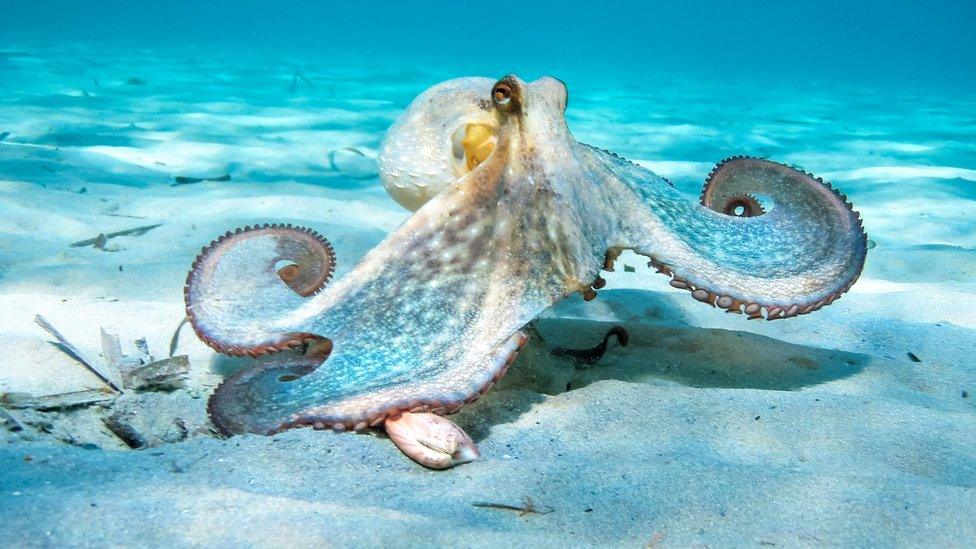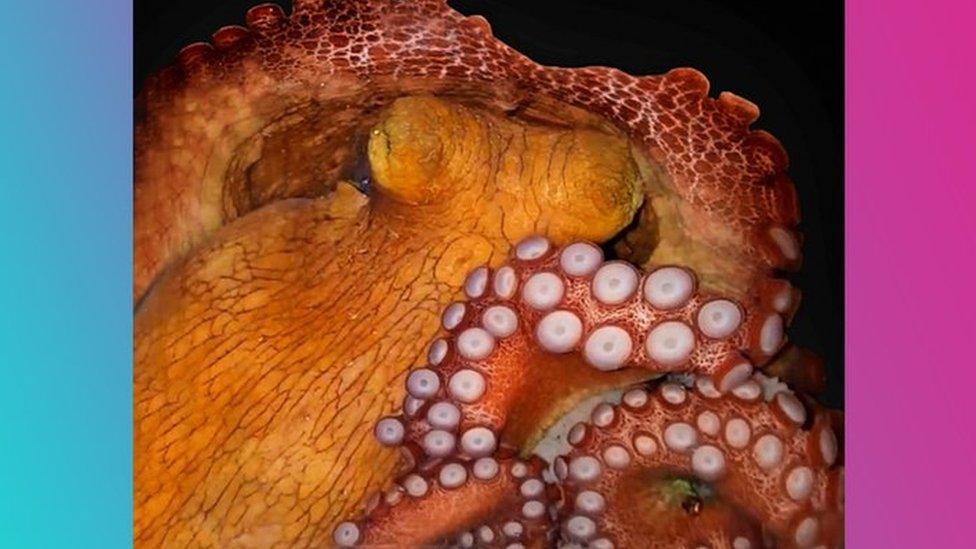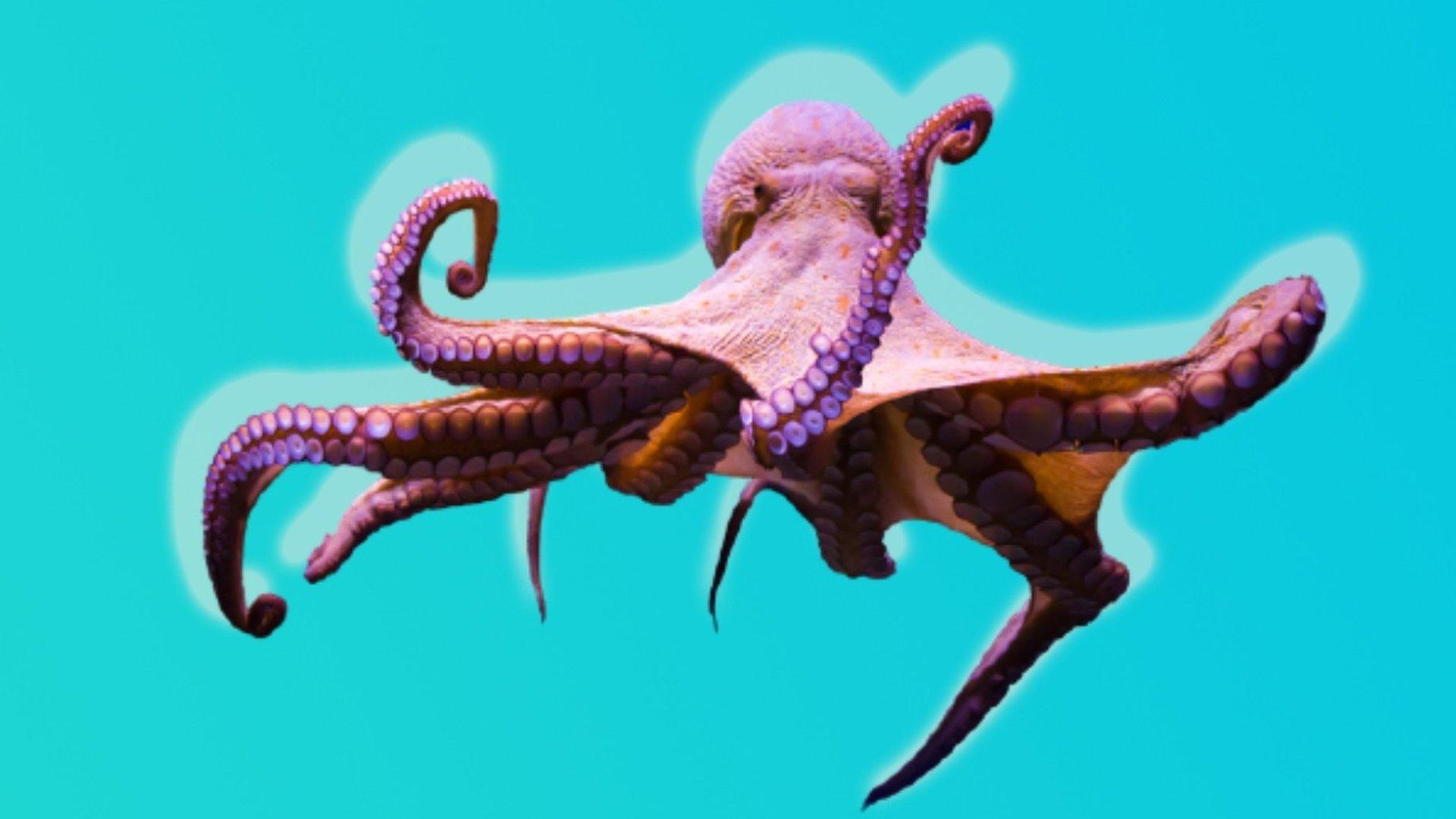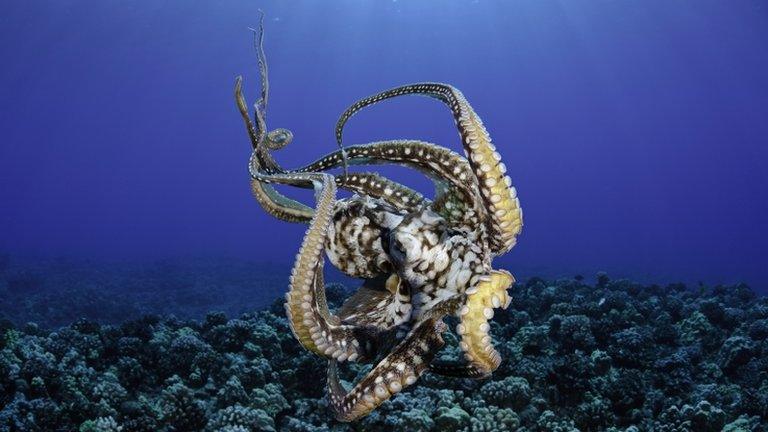Colour changing ink invented by scientists at Hong Kong University
- Published
- comments

The ink mimics one one of the special characteristics octopuses are known for
Scientists at a university in Hong Kong have created a new type of ink which mimics a special characteristic made famous by octopus.
The ink changes colour when exposed to light, much like octopuses do to blend in with their surroundings.
It's thought it could one day be used as a form of camouflage when needed, for example on clothing if in nature.
How does colour changing ink work?
The ink is made up of particles of a chemical compound called titanium dioxide which have been dyed different colours.
These can have different responses to light, with some of the ink particles rising to the surface and others falling depending on the level and type of light exposure. It means a material which contains the ink can can appear to change colour.
"Like with oil and water, [the particles] separate and float to the top, and that is because they're coloured," Jinyao Tang at the University of Hong Kong told New Scientist.
"You can change their colours accordingly and they mimic whatever the colour you're actually shooting on them."
Octopuses are part of the cephalopod family, which also includes squid and cuttlefish.
Cephalopods have special cells called chromatophores. Each one of these cells has a tiny sac which contain different colour pigments.
When the muscles around the cell get tighter, they pull these tiny sacs wider, meaning more pigment is visible on the octopus' skin. However, when the muscles relax, the sac goes back to its normal size, and and the pigment becomes less visible.
The team who worked on the study created the ink using three different colours, cyan, magenta and yellow - blue, pink and yellow. The strength and wavelengths of the light, shone from a projector, could be adjusted to produce different colours, patterns and even images.
The researchers believe that with further development, the ink could prove very useful in the future for camouflaging.

It's thought the ink could one be used for camouflaging in environments like forests
"In the forest, everywhere is green, so your clothes or the material should receive that kind of green-colour light around and then it becomes green," Tang told New Scientist.
"Navigating the desert, everywhere is yellow, then [the ink] becomes a yellowish colour."
However, the ink would only be effective in environments like this if the desired colour lasts for a significant period of time, something which the scientists haven't been able to achieve just yet.
It's also thought the ink could one day be used for things like updating signs and displays without using electricity.
- Published26 March 2021

- Published1 September 2021

- Published17 April 2015

